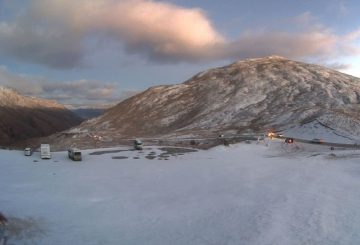流星,也称为流星,在一年中的任何夜晚都可以看到。但是,有些夜晚比其他夜晚更适合观看这些天体事件。当地球绕太阳运行时,它会穿过来自彗星和小行星的尘埃和碎片流。当天空中可见的流星数量急剧增加时,这些碎片会导致 “流星雨”。
现在,我们正在穿过哈雷彗星留下的碎片流的郊区。这就形成了水瓶座埃塔流星雨,从南半球特别明显。每年,当地球到达其轨道上的这个点时,早晨的天空中都能看到Eta Aquariids。
今年的展览预计将非常出色。阵雨的高峰恰逢新月,这意味着在黎明前的几个小时内,天空将变得格外黑暗——非常适合观看这颗著名彗星坠落的碎片。还有迹象表明,淋浴可能比平时更 “活跃”。
哈雷的彗星正式命名为1P/Halley,每隔76年绕太阳运行一次,沿着目前的路径行驶了数千年。每次穿过太阳系内部时,这颗彗星都会释放出尘埃和气体。这些尘埃在太空中扩散,沿着彗星的轨道形成了广阔的碎片场。
地球每年两次穿过这些碎片,形成两次众所周知的流星雨。十月,我们看到了猎户座流星雨,从两个半球都可以看见。但是,两场阵雨中最好的一场是Eta Aquariid流星雨,在5月初达到顶峰。
Eta Aquariids是一年中最好的流星雨之一,但它们并不那么出名,因为它们最适合从南半球观看,而且很难从赤道以北的地方观测。
对于南半球的人来说,观测Eta Aquariids的最佳时间是黎明前的几个小时,那时辐射——流星的起源点——位于天空的高处。随着天空中辐射升高,可见的流星数量会增加。
预计今年的Eta Aquariid流星雨将特别特别。不仅天空会因为新月而变暗,这使得流星更容易被发现,而且科学家们还认为,今年看到的流星可能比平时多得多。实际上,有人认为2024年的Eta Aquariid流星雨可能是整个21世纪最强的流星雨。
预测流星雨的活动很困难,一些研究人员认为,今年可能只是 “一切照旧”。无论如何,这里的条件非常完美,峰值将在 5 月 6 日早晨,这是一个很好的机会,可以计划周末去乡村旅行,欣赏天然烟花表演,然后再观看美丽的秋日日出。





























































